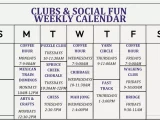
Beyond the Casino: Roulette Variations from Different Global Cultures and Their Histories
October 17, 2025The spin of the wheel. The clatter of the ball. The collective intake of breath. We all know this scene from casinos worldwide. But what if I told you the classic game of roulette has a rich, globe-trotting family tree? It’s true. The game we know today is just one branch.
From the bustling markets of the Middle East to the stately homes of England, cultures have put their own unique spin on this game of chance. Let’s dive into the fascinating histories of roulette variations you might never have heard of.
The European Ancestor and Its American Cousin
To understand the family, you have to start with the parents. The story of roulette, meaning “little wheel” in French, is a bit murky. Many credit the 17th-century French mathematician Blaise Pascal with its invention—though he was actually trying to create a perpetual motion machine. Funny how that works out, right?
European Roulette: The Original Sophisticate
This is the classic. The one you find in Monte Carlo and other high-end European spots. Its key feature? A single zero (‘0’) on the wheel. This single detail gives the house a relatively modest edge of 2.7%. It’s sleek, it’s elegant, and it’s the version purists swear by. The game just feels… older, more established. You can almost imagine men in tailcoats and women in gowns placing their bets.
American Roulette: The Hustler’s Game
When roulette crossed the Atlantic, it got a makeover. American casino owners, always looking for an edge—literally—added a double zero (’00’) to the wheel. This seemingly small change doubled the house edge to a hefty 5.26%. It was a business decision, plain and simple. The wheel layout is different, too, with the numbers arranged opposite to their European counterparts. This version is all about fast-paced action and, honestly, a bigger risk.
| Variation | Key Feature | House Edge | Cultural Origin |
| European Roulette | Single Zero (0) | 2.7% | French Aristocracy |
| American Roulette | Double Zero (0 & 00) | 5.26% | US Casino Innovation |
| French Roulette | “La Partage” Rule | ~1.35% | French Gaming Salons |
Forgotten Relics and Regional Oddities
Now for the really good stuff. Beyond the two big names, there are historical and cultural variants that are, well, they’re just more interesting.
French Roulette: The Player’s Best Friend
Often confused with European Roulette, French Roulette is a different beast entirely. It uses the same single-zero wheel, but it has secret weapons for the player: the “La Partage” and “En Prison” rules. Basically, if the ball lands on zero, you only lose half your even-money bet, or your bet is “imprisoned” for the next spin. This cuts the house edge down to a razor-thin 1.35%. It’s the mathematician’s choice. The table is also different, with the betting area in French, which adds a certain je ne sais quoi.
Roly-Poly and E.O.: The English Ancestors
Before the French perfected their wheel, the English were playing a similar game called Roly-Poly in the 18th century. It featured a wheel with alternating even and odd slots. It was eventually banned for being, well, too popular. Its direct descendant was E.O. (Even-Odd), which became a staple at English fairs and country houses. These games were simpler, cruder, and lacked the finesse of roulette, but the DNA is unmistakable. They were the rough draft of a masterpiece.
A World Tour of Spinning Wheels
The concept of betting on a spinning wheel or a rolling ball isn’t exclusive to Europe. In fact, you can find similar games all over the world, each with its own local flavor.
Biribi: The Italian High-Stakes Precursor
Imagine a lottery, but more intense. That was Biribi, an Italian game popular in the 18th century. Players would bet on numbers from 1 to 70, which were drawn from a bag. The payouts could be massive—up to 70 times the bet. But here’s the dark side: the penalties for running illegal games were severe, including galley slavery. It was a dangerous game in every sense. Biribi’s number-based betting system clearly influenced the development of roulette as we know it.
Hokm and Other Regional “Wheels”
Venture into the Middle East and you’ll find games that scratch the same itch. While not roulette per se, games like the Persian card game Hokm involve deep strategy and chance, embodying the same risk-and-reward spirit. In some regions, you might find local lottery games or even children’s games involving spinning tops where small wagers are placed. The human desire to predict an unpredictable outcome is truly universal.
It’s not always about a wheel. Sometimes it’s a deck of cards, or dice, or even a spinning top. The mechanism changes, but the core thrill remains the same.
Why These Histories Matter for Modern Players
You might be wondering, “This is cool, but what does it mean for me playing online today?” Well, a lot, actually. Knowing the history of these roulette variations gives you power.
First, it explains the odds. That brutal double zero on the American wheel wasn’t an accident; it was a business strategy. Knowing that, you might actively seek out European or French tables online for a better shot. Understanding “La Partage” can save you money. It turns you from a casual bettor into an informed participant.
Second, it connects you to a centuries-old tradition. You’re not just clicking a button; you’re taking part in a global story of chance, strategy, and human nature. Every time you place a bet on red or black, you’re echoing the decisions of an English farmer at a country fair or a French noble in a Parisian salon.
The wheel keeps spinning, but its story is still being written. The next time you play, remember you’re spinning a piece of history.






